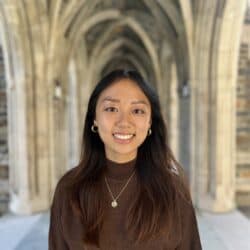With average college tuition costs rising every year due to inflation, it’s increasingly important to be aware of the costs associated with higher education.
One aspect of this is understanding what exactly tuition is, along with how it differs across factors like geographical location and institution type.
Tuition vs. Cost of Attendance
Tuition and cost of attendance may seem like the same thing, but there is a significant difference between the two.
Tuition is the base amount of money you pay to attend the institution and take classes, while the cost of attendance is the estimated total of expenses you will pay as a student, which includes the cost of tuition, fees, and other student expenditures.
Cost of attendance = Tuition + Room and Board + School Supplies + Transportation Fees…
What is the Average Cost of Tuition in the US?
The average cost of tuition for a four-year, in-state, public institution is $9,377, while the average cost is $27,091 for out-of-state. For private institutions, the average cost of tuition for a non-profit is $37,641, while a for-profit costs an average of $18,244.
Average College Tuition by State
As you explore potential colleges, keep in mind that tuition can also be influenced by geographic region. Historically, public colleges in the northeast have been the most expensive, while the least expensive schools are in the Plains and the South.
The table below shows the average total cost of college tuition by state, ordered from greatest-to-list.
State
Tuition & Fees
Tuition + Room & Board
Vermont
$17,593
$30,752
New Hampshire
$16,749
$29,222
Illinois
$14,579
$26,252
Pennsylvania
$14,532
$26,040
Connecticut
$14,487
$28,425
New Jersey
$14,184
$28,335
Massachusetts
$13,939
$28,317
Virginia
$13,931
$25,761
Michigan
$13,716
$24,777
Rhode Island
$13,697
$26,946
South Carolina
$12,544
$23,181
Minnesota
$11,836
$21,858
Oregon
$11,537
$24,517
Arizona
$11,410
$24,681
Delaware
$11,343
$24,862
Kentucky
$10,976
$22,317
Alabama
$10,617
$20,993
Maine
$10,377
$20,677
Tennessee
$10,271
$20,639
Hawaii
$10,197
$22,012
Ohio
$10,049
$22,860
Indiana
$9,656
$20,572
Louisiana
$9,656
$20,031
Maryland
$9,401
$22,380
Iowa
$9,373
$19,788
Missouri
$9,310
$19,394
Colorado
$9,269
$22,288
Kansas
$9,081
$19,082
North Dakota
$9,065
$18,057
South Dakota
$9,012
$17,177
Alaska
$8,849
$22,185
Wisconsin
$8,782
$17,875
Nebraska
$8,761
$19,352
Mississippi
$8,642
$19,221
Arkansas
$8,468
$18,262
New York
$8,416
$24,231
California
$8,401
$24,015
West Virginia
$8,252
$19,312
Oklahoma
$8,064
$17,283
Texas
$8,016
$18,325
Georgia
$7,525
$18,711
Washington
$7,485
$21,027
Idaho
$7,482
$16,518
New Mexico
$7,393
$17,113
North Carolina
$7,260
$17,113
Montana
$6,993
$16,931
Utah
$6,764
$14,653
Nevada
$6,434
$18,065
District of Columbia
$6,152
N/A
Wyoming
$4,785
$14,584
Florida
$4,541
$15,543
Private vs. Public Schools
Public institutions are funded by the government, while private schools are funded by tuition and endowment funds.
Generally, private colleges have more expensive tuition than public schools. In the graph below, we can see that private four-year colleges have historically cost more than your average public four-year, public two-year, and private two-year school.

Source: Education Data
However, it’s important to note that the average cost of attendance differs from student to student.
A low-income student may receive more financial aid from private universities instead of public universities, given that several private universities are 100% need-based. On the other hand, it may be cheaper for an in-state, middle-income student to attend public schools instead of a private school, due to in-state grants.
All this is to say that you should explore your financial resources at every school you are interested in, public or private. Most schools offer an online tuition calculator that estimates what the total cost of tuition may be for your financial standing. Reach out to the financial aid office if you have any questions.
The latest rates from Sparrow’s partners
If you want to skip pre-qualification and apply directly with a lender, you can do so by clicking Apply below.
Closing Thoughts From the Nest
As you explore your college options, be sure to make note of the average undergraduate tuition for the institutions you are interested in. Whether you plan to borrow student loans or not, it’s important to be mindful of how much your education costs.
If you’re looking for private loans to finance your education, consider using Sparrow. Sparrow offers a free, online tool that allows you to compare pre-qualifying private loans across 15+ private lenders.


